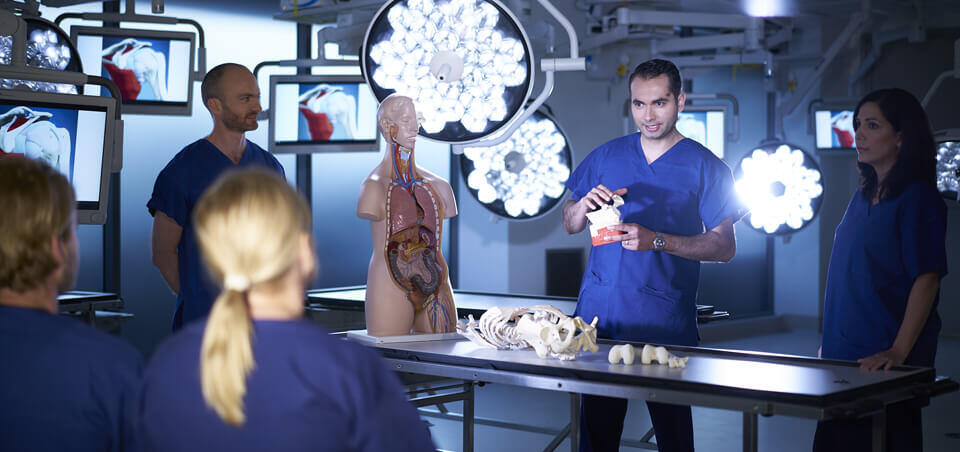Ulnar Neuropathy
Knowledge that empowers
What is it?
Ulnar neuropathy refers to signs and symptom of abnormal function of the ulnar nerve in the arm.
The ulnar nerve passes from the armpit, down the inside of the arm and elbow through the cubital tunnel and then proceeds further down the forearm to the hand. It supplies the sensitivity to the skin on the medial (inside) aspect of the hand and 4th and 5th fingers, as well as supplying a number of muscles of the hand and forearm.
Most people know of the ulnar nerve as their “funny bone” having accidentally hit the nerve on the inside of their elbow at some stage in their life. Sometimes this condition is called cubital tunnel syndrome.

What are the causes?
Ulnar neuropathy can have a number of causes including, but not limited to:
- Pressure on the ulnar nerve at the elbow from resting the elbow on tables or other supports
- An ulnar nerve that is mobile and slips in and out of its bony groove at the inside of the elbow
- Compression of the ulnar nerve from swelling inside the elbow
- Elbow Trauma – compression can be related to fractures or bone growth due to old fractures
- Repeated bending of the elbow or sustained periods of time spent with the elbows bent such as reading a book in bed
- Reduced mobility of the ulnar nerve as it passes the elbow – a known issue after major elbow surgery and/or traumatic injuries to the elbow
- Elbow osteoarthritis with compression of the nerve due to bone growth inherent to the arthritis.
What are the symptoms?
Ulnar neuropathy commonly causes tingling and/or numbness in the area of skin that it supplies in the hand.
It may cause pain that radiates from the elbow to the hand like an electric shock. A more concerning and advanced set of symptoms is weakness, heaviness or clumsiness of the hand – these are often associated with wasting of the muscles of the hand in more severe cases of ulnar neuropathy.
How is the diagnosis made?
After taking a thorough clinical history, a physical examination can help determine the cause of ulnar neuropathy.
It is always important to consider other causes for nerve injury or compression such as a pinched nerve in the neck or another neurological condition that can cause similar signs and symptoms of ulnar neuropathy. Sometimes there can be a double entrapment of the nerve named as “double crush syndrome” with severe symptoms.
A nerve conduction study can help confirm the diagnosis and provide more understanding of where the ulnar nerve injury or compression arises from. Depending on the suspected cause, it may also be necessary to have x-rays or an MRI of the elbow.
What is the prognosis?
The prognosis for recovery from ulnar neuropathy does depend on the specific cause, the level of compression or injury and the length of time that someone has had the condition for. Surgery is rarely, if ever, required in those with mild symptoms. However, surgery may be required in cases where there is, or has been, a major injury to the elbow, in those who have significant sensory symptoms and/or hand weakness.
Surgical treatment
The aim of surgery is to relieve any compression on the ulnar nerve and therefore stop any further nerve damage leading further loss of sensation and weakness of the hand.
Surgical treatment for these cases of ulnar neuropathy typically involves releasing the ulnar nerve from the soft tissues at the elbow and then, often transferring and securing it at the front of the elbow.
This procedure is known as ulnar nerve transposition. Because the nerve is now located at the front of the elbow, it will no longer flick in and out of its original groove at the elbow and it will not be placed on stretch when the elbow is bent.
